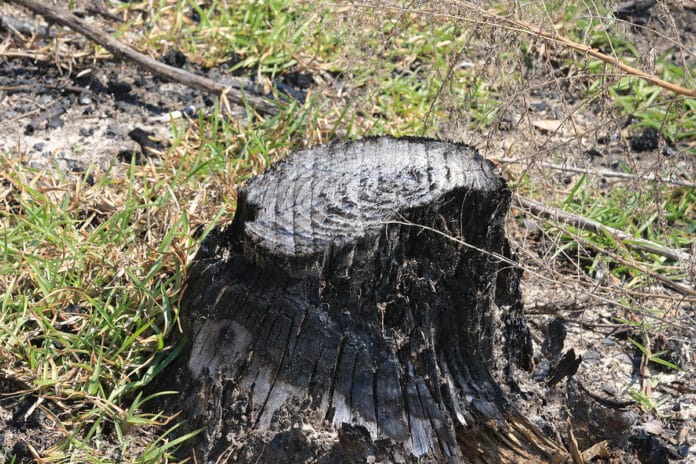Just a little over 10 miles from Hernando/Citrus County line, the Citrus tract consists of over 50,000 acres with three main trailheads: Holder Mine, Tillis Hill, and Mutual Mine. At Mutual Mine, State Land Forester Daniel Taylor showed me what his job entails with the Florida Forest Service.
His job is to manage timber. He has to know about all the timber within the Withlacoochee State Forest. He has to be knowledgeable in every variety of pine and hardwood as well as how to keep the forest healthy.
“We inventory 10% of the forest every year,” Taylor said. “We have a computer database of the volumes and different timber stands we have, that way we know what is out there so we can manage it.”
Forest Inventory: A forest inventory or cruise determines the location of timber and estimates its quantity by species, product potential, size, quality, or other characteristics. A cruise may be conducted for land acquisition or sale, a timber sale, or other objectives.
A cruise can also assist in assessing other forest values such as wildlife habitat (mast, crops, snags, wetlands, dens, nests, thickets, etc.), watershed, recreational opportunities, or other management opportunities that exist on the property.
Source:http://www.sfrc.ufl.edu/Extension/florida_forestry_information/forest_management/inventory.html
Surveying the woods by foot as well as GIS data (Geographic Information Systems) help foresters estimate how much timber occupies the forest. A timber stand is any sized area within the forest that has trees of a similar species, size, and age.
Having that information available helps Taylor know which stands are in need of thinning. Thinning involves removing a mixture of hardwoods and pines. If the crowns (tops of trees) are blocking the sunlight from reaching the understory, there is too much shade and will diminish the growth of the pines. If thinning is not conducted, then trees become too dense and may become vulnerable to disease and insect infestation. Allowing sunlight to reach the understory can improve forest health as well as wildlife habitat.
“The basic reason why we thin stands are so they don’t get overgrown,” Taylor said. “If you don’t thin the stands out they will overgrow and the hardwood (oak trees) will actually take over pine stands,” explained Taylor.
Another part of Daniel’s job is timber sales, timber sales range from 90 to 500 acres. This is an important aspect of his job, by providing sufficient timber to lumber companies. The sale that is currently active in Citrus is just under 500 acres within the Mutual Mine area.
As in this case, some instances the stands will be clear cut, meaning all the pine trees will be removed as well as some hardwoods, which are used for mulch.
“This is a salvage sale,” Taylor said. “We did a prescribed burn earlier last summer and I went into inventory and noticed bugs (tree-feeding insects) and a lot of dying trees.”
A lot of factors were considered with this particular stand, a lack of rain, density of hardwoods and stress. Clearing this area will bring new fresh growth of wildflowers, new pine growth and the opportunity of planting new longleaf seedlings.
Before any work, whether it is timber sales, putting in a fence or road, the forester will have to complete an environmental assessment of that area.
“Anything that is going to disturb the forest out here, we conduct an environmental assessment,” Taylor said. “I have to say whether it is going to affect a hiking trail or a red-cockaded woodpecker cluster.”
Once the loggers and foresters plan a harvest, the loggers will create a path to haul out the cut timber. When the logging has been completed, Daniel will have the loggers block the entrance.
“If I can close it off for a short amount of time and give this road enough time to rejuvenate itself, eventually it will disappear,” Taylor said.
How Taylor maintains timber affects important keystone species like the red-cockaded woodpecker and gopher tortoise, as well as the endangered eastern indigo snake as these species subsist in pine forest and sandhill communities.
“With all the development happening I think it is important places like this are protected and taken care of. It’s a place where those that grow up in the city can actually come and see what natural areas are like,” Taylor said. “It’s a resource, I think we need to protect. We’re not making any more land, we can make houses and all that kind of stuff, but we can’t make this.”
Daniel Taylor has been with the Florida Forest Service for 15 years and currently manages the Richloam Tract.

